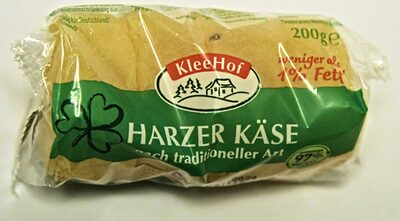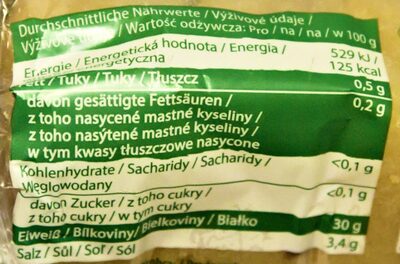Harzer Käse nach traditioneller Art - KleeHof - 200 g
This product page is not complete. You can help to complete it by editing it and adding more data from the photos we have, or by taking more photos using the app for Android or iPhone/iPad. Thank you!
×
Barcode: 4043600606018 (EAN / EAN-13)
Common name: Sauermilchkäse
Quantity: 200 g
Packaging: Plastic, de:Kunststofftüte
Brands: KleeHof, Käserei Rusack
Categories: Dairies, Fermented foods, Fermented milk products, Cheeses, de:Sauermilchkäse
Labels, certifications, awards:
No gluten, No GMOs, Ohne Gentechnik, No lactose
Origin of ingredients: Germany
Manufacturing or processing places: Leppersdorf, Sachsen, Deutschland
Traceability code: DE SN 016 EG
Link to the product page on the official site of the producer: https://www.kaeserei-loose.de/unsere-mar...
Stores: NETTO
Countries where sold: Germany
Matching with your preferences
Environment
Carbon footprint
Packaging
Transportation
Report a problem
Data sources
Product added on by predatorix
Last edit of product page on by fabi2.
Product page also edited by ecoscore-impact-estimator, kiliweb, omnomnotes-app, openfoodfacts-contributors, packbot, prepperapp, schmerzbereiter, tenlight, yuka.sY2b0xO6T85zoF3NwEKvlmlJVOf__DfiCgLvtU2X1OufAqS1b-9R-bbjPas.










